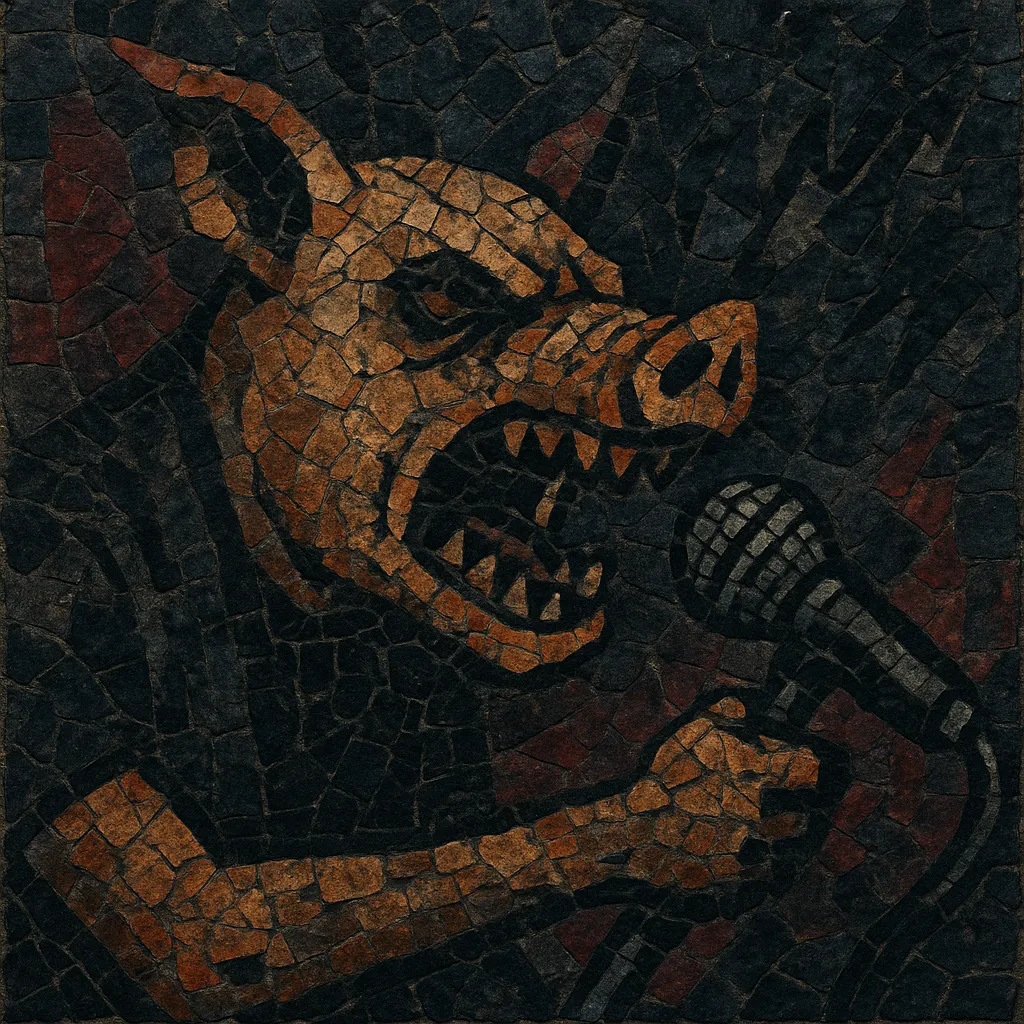Pigfuck is a caustic, noise-scraped strain of American underground rock that emerged in the mid‑1980s. It mashes the velocity and antagonism of punk with the abrasion of no wave and the mechanical thud of early industrial, often delivered with a blackly comic, misanthropic streak.
Typical tracks lurch on repetitive, bass-forward riffs, blown-out guitar texture, and pummeling drum patterns (frequently tom-heavy or even drum-machine driven). Vocals are barked, sneered, or deadpan, while lyrics dwell on the grotesque, blue-collar absurdity, and the uglier corners of American life. Production is intentionally raw and dry—close-miked, low on reverb, and happy to leave in feedback, clipping, and unpleasant overtones.
Pigfuck coalesced in the United States as regional punk and post‑punk scenes—especially in the Midwest, the South, and New York—pushed toward harsher sonics. Bands like Big Black (Chicago) welded drum machines and sheet‑metal guitar noise to punk urgency, while Austin’s Scratch Acid and the Texas-borne Butthole Surfers injected corrosive psychedelia and grotesque humor. The term “pigfuck,” used by critics at the time (often half‑pejoratively), came to denote this willfully abrasive, anti‑polish approach.
The sound spread through an underground infrastructure of independent labels, zines, and college radio. Touch and Go (Chicago), Homestead (New York), and later Amphetamine Reptile (Minneapolis) became hubs, releasing records by Killdozer, Pussy Galore, Laughing Hyenas, and others. Shows were loud, confrontational, and physical—more a barrage than a performance—cementing a reputation for ugliness that fans prized.
By the late ’80s, the style’s rhythmic stomp, serrated timbre, and black-comic worldview fed directly into early ’90s underground rock. The Jesus Lizard’s precision menace, the Cows’ unhinged AmRep swagger, and the U‑Men’s pre‑grunge churn helped bridge pigfuck’s aesthetics to grunge, post‑hardcore, and noise‑leaning alt‑rock. Even when the term fell out of fashion, its DNA—dry, brutal production; bass‑led lurch; feedback as composition—remained embedded in heavy indie, sludge‑adjacent sounds, and the nastier edges of alternative rock.
While never a mainstream tag, pigfuck endures as a touchstone for musicians seeking confrontational texture and gallows humor. Its records stand as a template for weaponizing minimalism and timbre—proving that repetition, volume, and ugly tones can be a deliberate, expressive aesthetic rather than a byproduct of low budgets.


